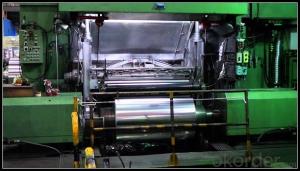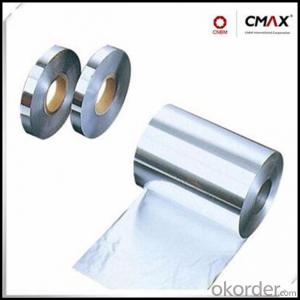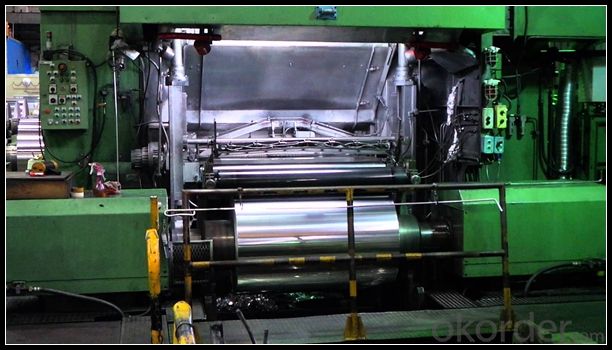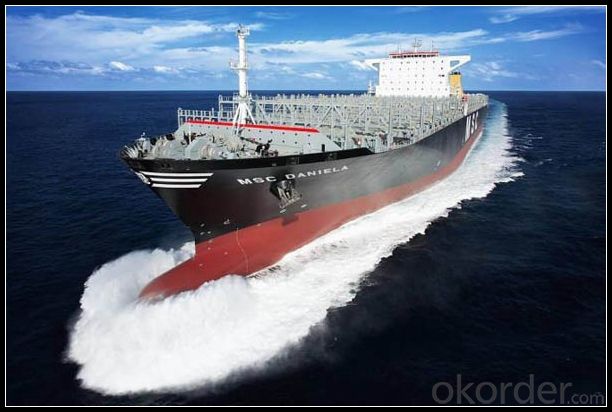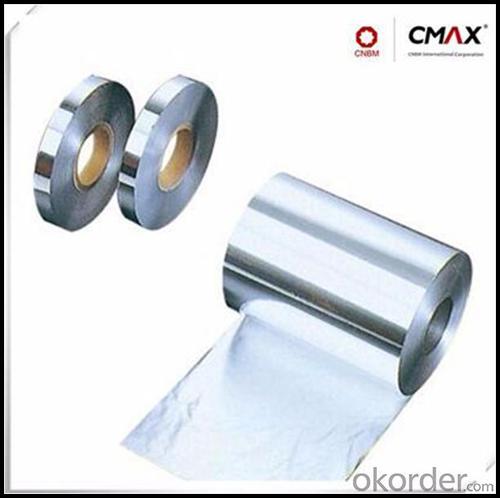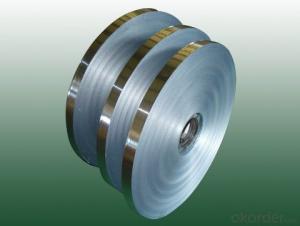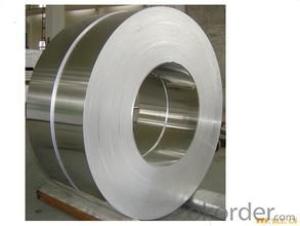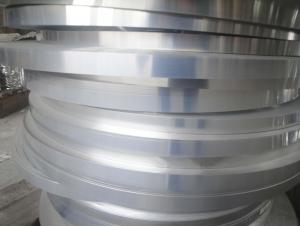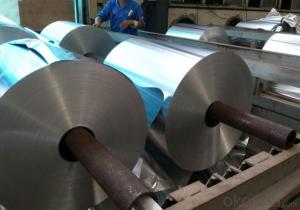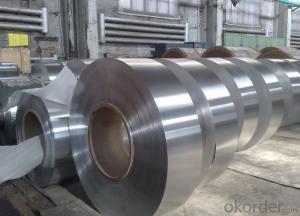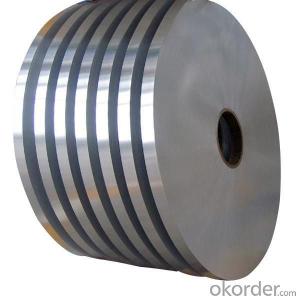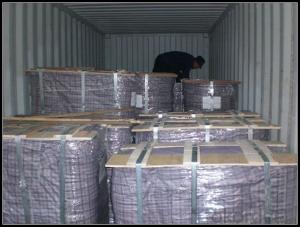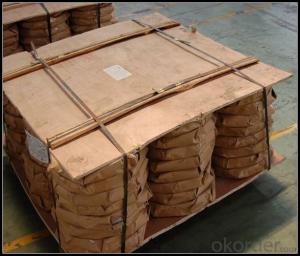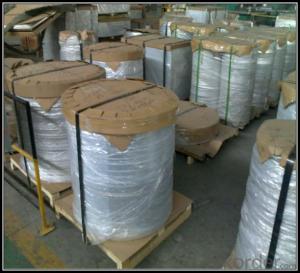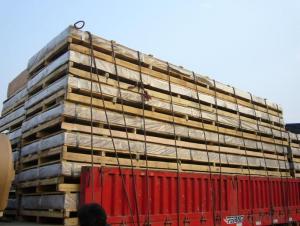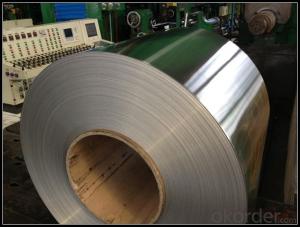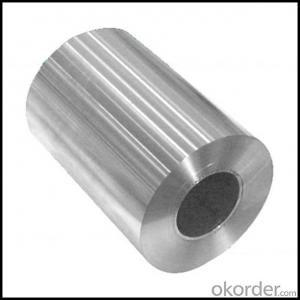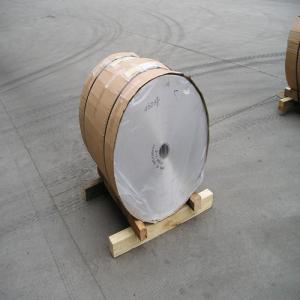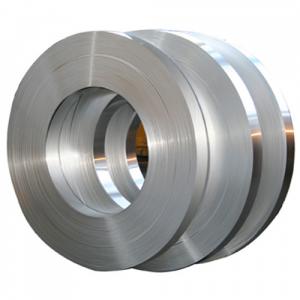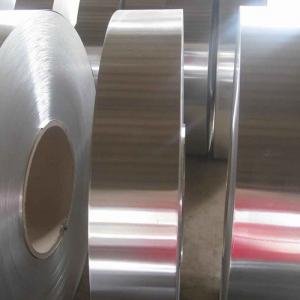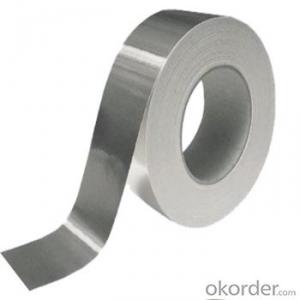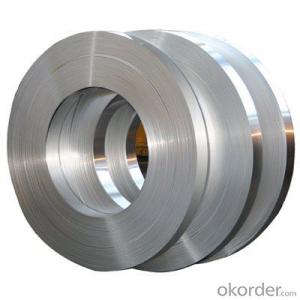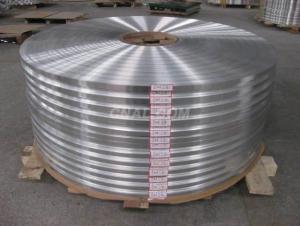Aluminum Transition Strips - Price of Diamond Aluminium Sheet 1100 1200 3003 OH12 OH14
- Loading Port:
- Tianjin
- Payment Terms:
- TT OR LC
- Min Order Qty:
- 1 m.t.
- Supply Capability:
- 4999 m.t./month
OKorder Service Pledge
OKorder Financial Service
You Might Also Like
Specification
1. Specification of Aluminum
1) Alloy | 1050, 1060,1100, 3003 3004 3105 3005 5005 5052 etc |
2) Temper | O/H12/H14/H1/H18/H32/H34/H36/H38//H111/H112/H116/H321/T6/T651/T3/T351 etc |
3) Thickness | 0.1mm to 6mm |
4) Width | 20mm to 3300mm |
5) Coil weight | 100kgs to 6 tons depends on actual requirement |
6) Core material | Aluminum alloy |
7) Coil Inner diameter | 76mm, 152mm,or as required |
2. Application of Aluminum
(1).Alumina
(2).Sulfates
(3).Niche compounds...
3. Feature of Aluminum
Most countries use the ending "-ium" for "aluminium". In the United States and Canada, the ending "-um" predominates.[20][79] The Canadian Oxford Dictionaryprefers aluminum, whereas the Australian Macquarie Dictionary prefers aluminium. In 1926, the American Chemical Society officially decided to use aluminum in its publications; American dictionaries typically label the spelling aluminium as "chiefly British".The earliest citation given in the Oxford English Dictionary for any word used as a name for this element is alumium,
4. Certificate:
SGS and ROHS(if client request, paid by client), MTC(plant provided), Certificate of Origin(FORM A, FORM E, CO), Bureau Veritas and SGS (if client request, paid by client), CIQS certificate
5. Image of Aluminum
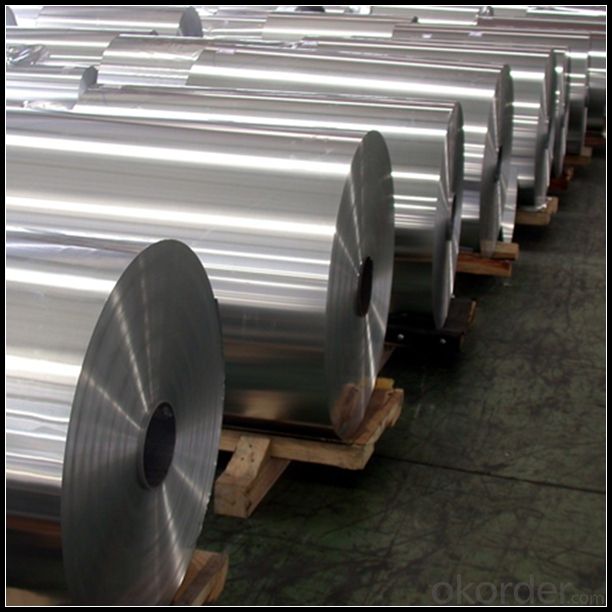
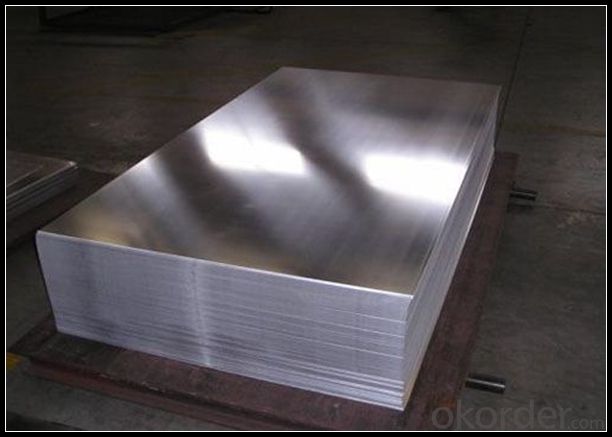
6. Our Service
1. Reply your enquiry in 24 working hours. |
2. OEM, buyer design, buyer label services provided. |
3. Exclusive and unique solution can be provide to our customer by our well traned and professional engineers and staffs. |
4. We can provide free sample for your check |
5. We have the certification of ISO 9001 |
6. Timely delivery |
7. Special discount and protection of sales area provided to our distributor. |
8. Good after-sale service. |
7. FAQ
Q: What is the produce prase? | ||||
A: Normally it would be 40days after received your deposit. | ||||
Q: Can you provide free samples? | ||||
A: Yes, free samples will be sent to you on freight at destination. | ||||
Q: Can I get your latest catalogue? | ||||
A: Yes, it will be sent to you in no time. | ||||
Q: What is the MOQ? | ||||
A: 3 tons | ||||
Q: What are your payment terms? | ||||
A: We accept L/C, D/A, D/P, T/T, West Union,etc. |
- Q: Describe the process of manufacturing aluminum strips.
- <p>Aluminum strips are made through a series of processes starting with the production of aluminum ingots. The ingots are heated and then rolled into thin sheets in a hot rolling mill. This process reduces the thickness of the aluminum and elongates it into a strip. The hot-rolled strips are then cooled and may undergo further cold rolling to achieve the desired thickness and hardness. After rolling, the strips may be annealed to improve their ductility and strength. The final step includes cutting the strips to the required length and packaging them for distribution. This process ensures that aluminum strips have the desired properties for various applications such as construction, automotive, and aerospace industries.</p>
- Q: Is it possible to incorporate recycled materials into construction, specifically using aluminum strips for roofing?
- <p>Yes, you can use recycled materials in building construction. Aluminum strips are often made from recycled aluminum, which is a sustainable choice. Recycled aluminum requires significantly less energy to produce compared to new aluminum, reducing environmental impact. It's important to ensure that the recycled materials meet quality standards for construction and are sourced responsibly. Using recycled aluminum for roofing can contribute to a greener building project and help in waste reduction.</p>
- Q: Can the high frequency of aluminum band replace the high frequency of professional high-power loudspeaker box?
- General band speaker power in 10-40W, home HIFI speakers can be used, professional environment will not work
- Q: Aluminum band treble sounds good?
- Because, unlike moving motion loudspeakers, which require larger mass movement modules, the aluminum ribbon tweeter has excellent transient response.
- Q: Classification of aluminium strips of aluminium strips
- There are specific uses: aluminum aluminum (aluminum foil transformer) transformer, high frequency welding hollow aluminum strip, aluminum strip used for aluminum fin radiator belt, cable aluminum strip, aluminum strip, aluminum strip punching with aluminum belt etc..
- Q: Is it possible to construct awnings or shelters using aluminum strips?
- <p>Yes, you can use aluminum strips to make awnings or shelters. Aluminum is a popular choice due to its lightweight, corrosion resistance, and strength. It can be bent and shaped easily to create the desired structure. However, it's important to consider the thickness and grade of aluminum to ensure it can withstand the weight and environmental conditions it will be subjected to. Proper support and reinforcement should also be included in the design to maintain stability and durability.</p>
- Q: Describe the process of manufacturing aluminum strips.
- <p>The production process of aluminum strips involves several key steps. Initially, raw aluminum ingots are melted in a furnace. Once molten, the aluminum is poured into molds to create billets. These billets are then heated and passed through a series of rollers to reduce their thickness and achieve the desired strip dimensions. This process, known as hot or cold rolling, is repeated multiple times to refine the strip's thickness and surface quality. After rolling, the aluminum strips may undergo annealing to improve ductility and strength. Finally, the strips are cleaned, coated if necessary, and cut to length before being packaged and shipped to customers.</p>
- Q: Is it possible to use recycled adhesive to attach aluminum strips?
- <p>Using recycled adhesive to install aluminum strips is generally not recommended. Recycled adhesive may have reduced adhesive properties due to previous use, which could compromise the bond's strength and durability. It's crucial to use a new adhesive specifically designed for the material and application to ensure a secure and long-lasting installation. Always follow the manufacturer's guidelines for the best results.</p>
- Q: What is the minimum thickness that can be achieved when manufacturing an aluminum strip?
- <p>There is no absolute limit to how thin an aluminum strip can be made, but the practical limit is determined by the manufacturing process and the intended use of the strip. Modern technology allows for the production of aluminum strips as thin as a few micrometers. However, the thinness is constrained by factors such as material strength, ductility, and the specific application requirements. For instance, in the electronics industry, very thin aluminum strips are used for conductors, while in other applications, thicker strips might be necessary for structural integrity. The thinnest aluminum strips are often produced using techniques like rolling or extrusion, with the final thickness depending on the precision of these processes.</p>
- Q: This question asks for the primary applications or purposes of using aluminum strips.
- <p>Aluminum strips are primarily used in various industries due to their lightweight, corrosion resistance, and high strength-to-weight ratio. They are commonly used in construction for framing and cladding, in the automotive industry for vehicle bodies and parts, in aerospace for aircraft components, and in electrical applications for wiring and conductors. Additionally, aluminum strips are employed in packaging, such as food and beverage cans, and in the manufacturing of electronic devices and heat exchangers. Their versatility makes them a popular choice for many applications where durability and performance are required.</p>
Send your message to us
Aluminum Transition Strips - Price of Diamond Aluminium Sheet 1100 1200 3003 OH12 OH14
- Loading Port:
- Tianjin
- Payment Terms:
- TT OR LC
- Min Order Qty:
- 1 m.t.
- Supply Capability:
- 4999 m.t./month
OKorder Service Pledge
OKorder Financial Service
Similar products
Hot products
Hot Searches
Related keywords
